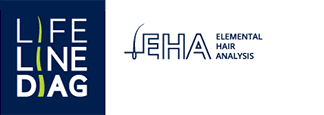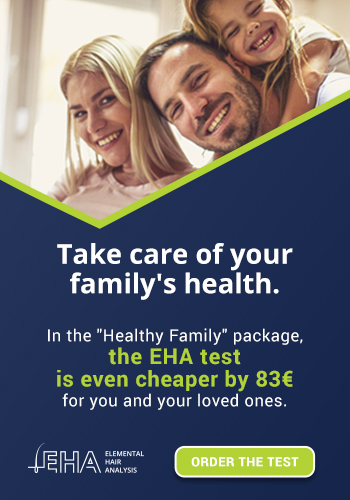 In today’s approach to health, there is a noticeable trend towards returning to early, even ancient concepts. The advancement of science and technology has allowed us to understand the principles of the functioning of individual cells and atoms, and it has been discovered that these principles also govern the overall functioning of the human body and all natural processes. This order and interdependence were described thousands of years ago by Chinese medicine, which used this acquired knowledge in a broad sense of therapy and patient recovery. Can we also utilize it today? Let’s try to find an answer to this question.
In today’s approach to health, there is a noticeable trend towards returning to early, even ancient concepts. The advancement of science and technology has allowed us to understand the principles of the functioning of individual cells and atoms, and it has been discovered that these principles also govern the overall functioning of the human body and all natural processes. This order and interdependence were described thousands of years ago by Chinese medicine, which used this acquired knowledge in a broad sense of therapy and patient recovery. Can we also utilize it today? Let’s try to find an answer to this question.
The Chinese perceived reality as a network of interwoven streams of energy, where the momentary intersection of flows represents events taking place in time and space. Based on these observations, they identified analogous energy pathways in the human body and named them meridians, on which they located active points, i.e., those whose stimulation or sedation results in the regulation of energy flow within the body. Procedures performed on active points using needles are the essence of acupuncture, and those using heat waves are known as moxibustion.
Acupuncture is not a way to generate energy but a method to regulate its flow through the body. According to Chinese medicine, every person inherits a life force called “Qi” from their parents. Translating “Qi” into Western concepts, we can talk about the potential that arises from the condition of the parents before conception, during the prenatal period, and the circumstances of birth. However, according to Eastern medicine, this inherited Qi is gradually depleted over time, for example, in the struggle against excessive, unfavorable external influences. So, what then becomes the secondary source of our energy? In order to gain new vital forces, we breathe, eat, shape our mentality, and form relationships with other people. If what we do is of high quality, both the food we consume and the social relationships we build, our vital forces will also be abundant. What a person manages to achieve, the factors they expose themselves to, determines whether they are in balance or an energetic imbalance. In other words, whether they are in health or illness.
Over thousands of years, the Chinese have described in detail the system of energy transformation, the functioning of the body’s systems and organs, as well as the production and flow of body fluids. How does their understanding of health and disease differ from the Western approach? In this regard, it is worth mentioning the words of Jeremy Ross, an English scientist, Chinese medicine specialist, and author of many books in this field: “The Western way of thinking does not focus on global patterns. It does not grasp the whole or want to see the parts in a broader context. The West still perceives events or entities as separate beings. It sees them like billiard balls that only collide when they come into contact, otherwise having nothing in common. That is why in the West, they believe that they can be studied separately from their natural environment or surroundings. This approach to health leads to the disease being the center of attention in treatment, rather than the healing of individuals.” If we reflect on the above thesis, even if there is any reservation with which we approach the methods of Chinese medicine, it is impossible to argue against it. However, can Eastern medical knowledge be practically and effectively utilized from the perspective of a natural therapy office?
Everyone decides how to pursue the improvement of their well-being. It is certainly worth implementing the principles of Chinese medicine, which focus on self-development and care not only for what we eat but also for what we think and how we live. It is known that not only a healthy body but also internal and spiritual balance is essential to enjoy good health. So, what kind of ailments can one seek natural therapy for? Practically any condition classified by Western medicine textbooks. This includes problems with the circulatory, respiratory, nervous, digestive, and musculoskeletal systems, degenerative and painful conditions, immune disorders, hormonal imbalances, allergies, and food intolerances. Natural therapy is also beneficial for conditions such as low energy, fatigue, sensitivity, irritability, as well as for boosting immunity before surgical procedures, improving concentration, and enhancing athletic performance. However, it is important to note that acute conditions and life-threatening emergencies require immediate intervention, sometimes involving life-supporting devices. In such cases, it is necessary to seek help promptly from the appropriate healthcare facilities.
Natural medicine is not inclined towards haste. Acupuncture, for example, has always relied on detailed diagnostics and patient interviews, which are often lacking in the modern healthcare system due to time constraints. Therapists usually take care of the whole family, getting to know their lifestyle, dietary preferences, and also the health history of previous generations. Based on the conducted interview, the therapist diagnoses the patient, taking into account their body structure, skin color and texture, pulse measurement, tongue appearance, and facial wrinkles. This information helps identify which organ systems have been weakened and whether and how the problem has spread.
Contrary to common belief, natural therapy clinics often make use of modern diagnostic advancements. A perfect example is the elemental hair analysis, which is successfully employed by both doctors and dietitians, trichologists, athletes, and practitioners of Eastern medicine. Elemental Hair Analysis (EHA) provides an accurate picture of the body’s mineral nutrition. It informs the doctor about any mineral imbalances, the dietitian about nutritional deficiencies, and in the case of natural medicine, it reveals the body’s potential for producing the aforementioned life energy, the quality of which largely depends on the quality of nutrition. However, the quality of food varies greatly, and it is impossible to compare the same products in terms of macro- and micronutrient content. Even two tomatoes from different crops can provide significantly different amounts of potassium, for example. Therefore, in making a diagnosis, one cannot rely solely on general knowledge and theory but must consider the actual results of diagnostic tests.
The history of acupuncture speaks of patients who were usually either well-nourished or malnourished. Today, we know that it is possible to eat objectively healthy but still not provide the body with the necessary elements for vital processes. Moreover, there is a high risk of introducing toxins into the body that are not accounted for in the concept of “healthy eating.”
Patients often perceive natural therapy methods as providing quick and long-lasting effects. Changes in nutrition, targeted supplementation, herbal therapy, acupuncture, and hirudotherapy combine to form a holistic approach that typically resolves more than one health issue. Patients often experience improvements in areas that were previously considered incurable or without a chance for improvement. In the case of conditions, especially in children with various developmental disorders, the root cause is often the body’s burden of toxic metals. Here again, the invaluable EHA analysis proves useful in detecting the presence of toxic elements in the body and taking necessary steps towards detoxification. New times bring new challenges, which is why it is worthwhile to support proven natural methods with validated diagnostic techniques.
That acupuncture, as one of the few natural treatment methods, has found its place in academic medicine and has been recognized by the World Health Organization (WHO) as a scientifically confirmed method of treatment? This method is known almost worldwide and continues to gain new supporters among doctors and patients. In Poland, its pioneers and advocates were eminent figures such as radiologist and pediatrician Dr. Stanisław Kubicz, otolaryngologist Dr. Ignacy Herecki, as well as Professor Dr. hab. n. med. Zbigniew Garnuszewski, the creator of the Polish school of acupuncture, a scientist, president of the Polish Acupuncture Society, and vice-president of the World Federation of Acupuncture Societies based in Beijing.Acupuncture can be applied to multiple conditions simultaneously (it is used in over 140 diseases). It can be combined with other therapeutic methods and does not interfere with pharmacological treatment. It can be used on children, the elderly, pregnant women (there are no age restrictions), and even in veterinary medicine. When performed correctly by a qualified acupuncturist, it does not cause any side effects.
Author: mgr inż. Anna Tubicz – biotechnologist, she specializes in acupuncture, cosmetic acupuncture, and hirudotherapy.
Source: Anna Tubicz, ANCIENT AND MODERNITY IN THE NATURAL THERAPY OFFICE – A Beneficial Combination for Health, DietPoint, 2(3)/2019, 46-50.
Excerpt used:
Jeremy Ross, Zang Fu: The Organ Systems of Traditional Chinese Medicine, published by AGARTHA in 2014















